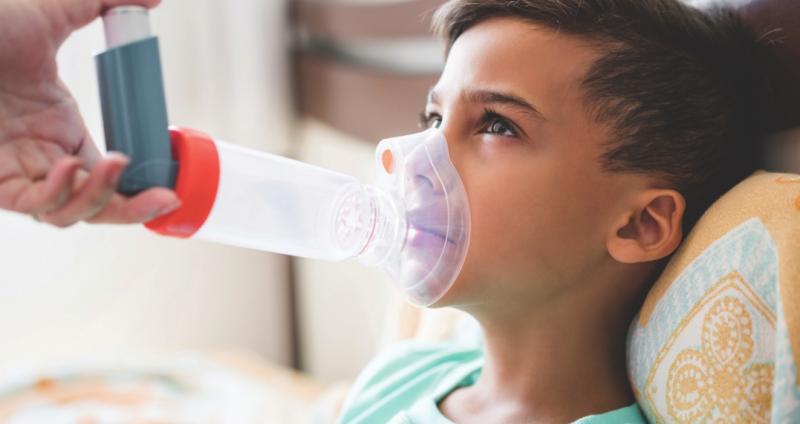A Parent’s Guide to Childhood Asthma

Asthma is a common respiratory disease in children. This is an inflammatory illness of the airways, leading to difficulty breathing. Undiagnosed and poorly controlled asthma can result in missed workdays for parents and frequent trips to the hospital.
To have a better understanding of asthma in children, you must first understand what happens when you breathe.
Normally, air goes through your mouth or nose and down into your airways and into your lungs each time you take a breath. Within the lungs, there are several air passages that help deliver oxygen throughout the body.
Asthma happens when there is swelling in the lining of the airways and tightening in the muscles. Mucus will then accumulate into the airways, minimizing the amount of air that passes through – and this can result in chest tightness and coughing.
Read further for more information about this paediatric illness from a family clinic in Dubai, including its symptoms, diagnosis, and treatment.
Symptoms
Most children can exhibit symptoms of asthma even before they turn five. The passageways that let air enter and leave the lungs, known as bronchial tubes, are narrow and small, especially in infants and toddlers. Other illnesses like chest colds and head colds can also make these passages even smaller, making it harder for parents to determine if such symptoms are caused by asthma.
Common symptoms of childhood asthma include:
- Wheezing when your child breathes
- Coughing when laughing or at night
- Chest tightness
- Shortness of breath
- Fatigue
- Panic
Your child can display one or more of these symptoms. You may think your little one is suffering from bronchitis or a cold, but this can indicate asthma when symptoms recur.
Types of Asthma
The type of asthma your child is suffering from can determine the symptoms they experience.
Allergic asthma
Otherwise known as extrinsic asthma, the allergic-type is triggered by allergens. And these may include mold, pollen, dust, food, and pet dander from dogs or cats.
Some forms of allergic asthma are seasonal because they go together with seasonal allergies.
Non-allergic asthma
Otherwise known as intrinsic asthma, the non-allergic type is triggered by air irritants that aren’t related to allergies. These irritants include cold air, burning wood, perfumes, cigarette smoke, household cleaning agents, air pollution, air fresheners, and viral illnesses.
Nocturnal asthma
The symptoms of this type of asthma worsen at night. It can be triggered by pet dander, heartburn, or dust mites.
Diagnosis
There is no single exam or diagnostic test that will conclude if your child has asthma. The paediatrician will use different criteria to ensure that the symptoms your child is experiencing result from asthma.
Here are things that can help diagnose asthma in children:
Health history
Before performing any exam, the paediatrician will conduct an interview to determine if you have a family history of asthma. If you, your spouse, or any member of the household is suffering from different types of allergic reactions or asthma, there is a higher possibility that your child has asthma.
Physical examination
The paediatrician will listen to your child’s breathing using a stethoscope and check their eyes and nose for any sign of allergies.
Diagnostic tests
- Skin test – A skin test may also be done to check for any allergic reaction such as eczema and hives because these conditions will increase the risk for asthma.
- Breathing tests – Performing breathing tests in children under five years old is crucial because it is difficult to get an accurate reading. Spirometry is the most common test wherein your child will blow into a device to measure the speed of air. Another test is the pulmonary function test that measures that airflow in and out of the lungs.
- Chest X-ray – The doctor may recommend a chest X-ray to make sure that your child’s heart and lungs are still functioning optimally. This is also a way to determine if gastroesophageal reflux disease or sinus infections are making asthma worse.
Treatment
Treating asthma will depend on the type of asthma, your child’s age, and triggers. Most doctors will recommend one or a combination of the following treatment options:
Breathing exercises
Breathing exercises refer to workouts that will help your child get more air in and out of their airways. It can help minimize the occurrence of asthma symptoms as well as boost lung capacity over time.
Medicines
There are two types of asthma medicines that the pediatrician may recommend:
Quick-acting
Quick-acting medicines are crucial to managing wheezing, coughing, difficulty breathing, and even asthma attacks. Bronchodilators, such as a nebuliser or inhaler, work in minutes to relax the tightened muscles in your child’s airway. Make sure that these medications are always with your child.
Long-term
Long-term asthma control medications are taken daily to minimise the severity and number of asthma symptoms. These include long-acting bronchodilators, anticholinergics, anti-inflammatories, and biologic therapy drugs.
When to See a Doctor
When your child’s signs and symptoms are getting worse, despite giving them their medications, see a doctor immediately. An asthma attack or exacerbation happens when your child’s airways have swollen, and the bronchial tubes become narrowed. This is a life-threatening situation that is characterized by cough, increased heart rate, shortness of breath, wheezing, hyperventilation, and agitation.
Diagnosing asthma in children is challenging, especially for infants and toddlers. They can’t always correctly express what they feel and might not be able to complete the breathing tests. As parents, you must be aware of the signs and symptoms of childhood asthma. As soon as you suspect that your child is suffering from it, bring them immediately to a trusted health facility.
Once your child is diagnosed with asthma, you must bring them to their paediatrician yearly or more often if they suffer from persistent symptoms after receiving their medication. Moreover, talk to the doctor about your child’s type of asthma, triggering factors, the best daily treatments, and the treatment plan when exacerbations happen.
It is crucial for parents to educate themselves regarding their child’s condition and the related symptoms. The more knowledgeable you are, the more proactive you can become in enhancing your child’s lung function and improving how they feel.
AUTHOR BIO
Vanessa Batten is a marketing and communications specialist with 10 years’ experience in the UAE healthcare industry and is the Senior Communications Officer at Mediclinic Middle East. Operating seven hospitals and 20 outpatient clinics with more than 900 inpatient beds in the UAE, Mediclinic is focused on providing specialist, multi-disciplinary services across the continuum of care and is regarded as the most respected and trusted provider of private healthcare services in the UAE.




